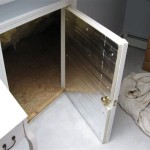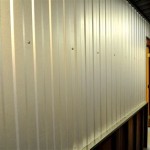How Long Does It Take To Paint The Interior Of A 3 Bedroom House in Singapore?
Painting the interior of a 3-bedroom house in Singapore is a relatively common home improvement project. The duration of the painting process, however, can vary significantly depending on a multitude of factors. Understanding these factors allows for a more accurate estimation of the time required and better planning for the project.
The actual time it takes to paint the interior of a typical 3-bedroom apartment or house in Singapore can range from 2 to 7 days. This wide range is due to differences in the size of the rooms, the condition of the existing walls, the type of paint used, the number of coats applied, and the efficiency of the painters involved. A smaller, well-maintained unit could be completed in a shorter timeframe than a larger, older unit with significant wall damage. The following discussion further elaborates on these critical factors.
Factors Influencing Painting Time
Several elements directly impact the amount of time needed to complete an interior painting project. These factors should be considered when estimating the duration of the job and when discussing the project with painting contractors.
Size and Layout: The overall square footage of the house is a primary determinant. A larger house naturally requires more time to paint than a smaller one. The layout of the house also plays a role. Open-plan designs with fewer walls may be quicker to paint than houses with many small, compartmentalized rooms. The height of the ceilings also adds to the surface area that needs to be covered. High ceilings can significantly increase the time needed for both preparation and the application of paint.
Condition of the Walls: The state of the existing walls is a crucial factor. Walls with cracks, holes, peeling paint, or water damage require extensive preparation before painting can begin. Filling cracks, patching holes, sanding rough surfaces, and removing loose paint all add significantly to the overall timeframe. Walls covered in dark or glossy paint may also require priming to ensure proper adhesion and coverage of the new paint color. Addressing pre-existing imperfections is vital for achieving a smooth and professional finish.
Type of Paint and Number of Coats: The type of paint used can influence the drying time and the number of coats required. Some paints, such as quick-drying acrylics, dry faster than others, like oil-based paints. The desired color and the existing wall color also affect the number of coats needed. Lighter colors typically require more coats to completely cover darker colors or to achieve an even finish. A single coat might suffice for a touch-up job with a similar color, but two or three coats are often necessary for a complete color change or to achieve optimal color saturation and durability.
The Painting Process and Associated Time
Understanding the different stages of the painting process provides a better understanding of where the time is spent. Each step requires a certain amount of time and attention to detail.
Preparation: This initial stage is often the most time-consuming, especially if the walls are in poor condition. Preparation includes moving furniture away from the walls and covering it with drop cloths to protect it from paint splatters. Masking trim, windows, and door frames with painter's tape is also essential to ensure clean lines and prevent paint from getting on unwanted surfaces. As previously mentioned, repairing cracks, holes, and other imperfections in the walls is critical. This may involve applying filler, sanding the surface smooth, and cleaning the walls to remove dust and debris. Thorough preparation is essential for achieving a professional and long-lasting paint job. This phase can take anywhere from half a day to two days, depending on the condition of the walls and the amount of furniture that needs to be moved. Removal of switch plates and outlet covers are usually also part of the preparation, although some painters prefer to tape around them.
Priming: Applying a primer is often necessary, especially when painting over dark colors, glossy surfaces, or walls with stains. Primer helps to create a uniform surface for the paint to adhere to, improves coverage, and prevents bleed-through. The drying time for primer varies depending on the type of primer used, but it typically takes a few hours. Applying primer to the entire house can add another half-day to a full day to the overall project timeline.
Painting: The actual painting process involves applying the paint to the walls using brushes, rollers, or sprayers. The choice of application method depends on the size of the area, the type of paint, and the desired finish. Brushes are typically used for cutting in around trim, corners, and edges, while rollers are used for painting larger surfaces. Sprayers can provide a smooth and even finish but require more preparation and masking to prevent overspray. The drying time between coats of paint is crucial, and painters must wait the recommended time before applying the next coat. Painting each room can take anywhere from a few hours to a full day, depending on the size and complexity of the room. For a 3-bedroom house, this phase can take two to four days, including the time needed for drying between coats.
Cleanup: After the painting is complete, the cleanup process involves removing the painter's tape, drop cloths, and other protective coverings. Furniture needs to be moved back into place, and any paint splatters or spills need to be cleaned up. Tools and equipment must also be cleaned and stored. Proper cleanup is essential for leaving the house in a livable and presentable condition. This phase typically takes a few hours to half a day.
Professional vs. DIY Painting
Deciding whether to hire professional painters or to undertake the painting project as a DIY endeavor has a significant impact on the overall time commitment.
Professional Painters: Professional painters typically have the experience, skills, and equipment to complete the job more quickly and efficiently than the average homeowner. They are familiar with different types of paint, application techniques, and preparation methods. They also have access to specialized tools and equipment, such as paint sprayers and scaffolding, which can speed up the process. Furthermore, professional painters can often work in teams, allowing them to complete the job in a shorter amount of time. While hiring professionals involves a financial investment, it can save time and effort, and often results in a higher-quality finish. A professional painting team should be able to assess the condition of the walls, provide an accurate estimate of the time required, and complete the job within the agreed-upon timeframe. Choosing a reputable and experienced painting company is crucial for ensuring a timely and satisfactory outcome.
DIY Painting: DIY painting can be a cost-effective option, but it requires a significant time commitment and effort. Homeowners need to be prepared to spend time researching different types of paint, learning proper application techniques, and purchasing the necessary tools and equipment. DIY painting typically takes longer than professional painting, especially for those with limited experience. Moreover, the quality of the finish may not be as high as that achieved by professional painters. However, for homeowners who enjoy DIY projects and have the time and patience to invest, painting the interior of their house can be a rewarding experience. It’s also generally recommended to start with smaller areas first to hone skills before tackling the whole house.
In summary, estimating the time needed to paint the interior of a 3-bedroom house in Singapore requires careful consideration of various factors. The size and layout of the house, the condition of the walls, the type of paint used, the number of coats applied, and the choice between professional and DIY painting all play a significant role. By understanding these factors and planning accordingly, homeowners can ensure a smoother and more efficient painting process.

3 Room Bto Renovation Lasting Ideas Tips For 2025

Aesthetic 3 Room Hdb Design Ideas In Singapore 2025 Space Factor

How Much Does It Cost To Paint A House In Singapore Painting

Hdb Mnh Reno Journey An Architect S Home Planning Pt 1

3 Facts To Help You Calculate Your Bedroom Renovation Cost Singapore 9creation

Hdb Renovation Jurong West Central Singapore Designed Under 45 000

Aesthetic 3 Room Hdb Design Ideas In Singapore 2025 Space Factor

3rm Hdb Interior Design Yang S Inspiration

3gen Flat Interior Design Ideas By Livspace For Singapore Homes

9 Hdb Renovation Permits And Guidelines You Need When Renovating Your Home
Related Posts








